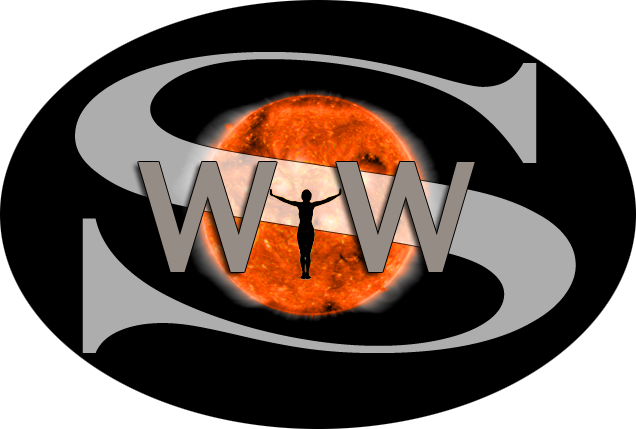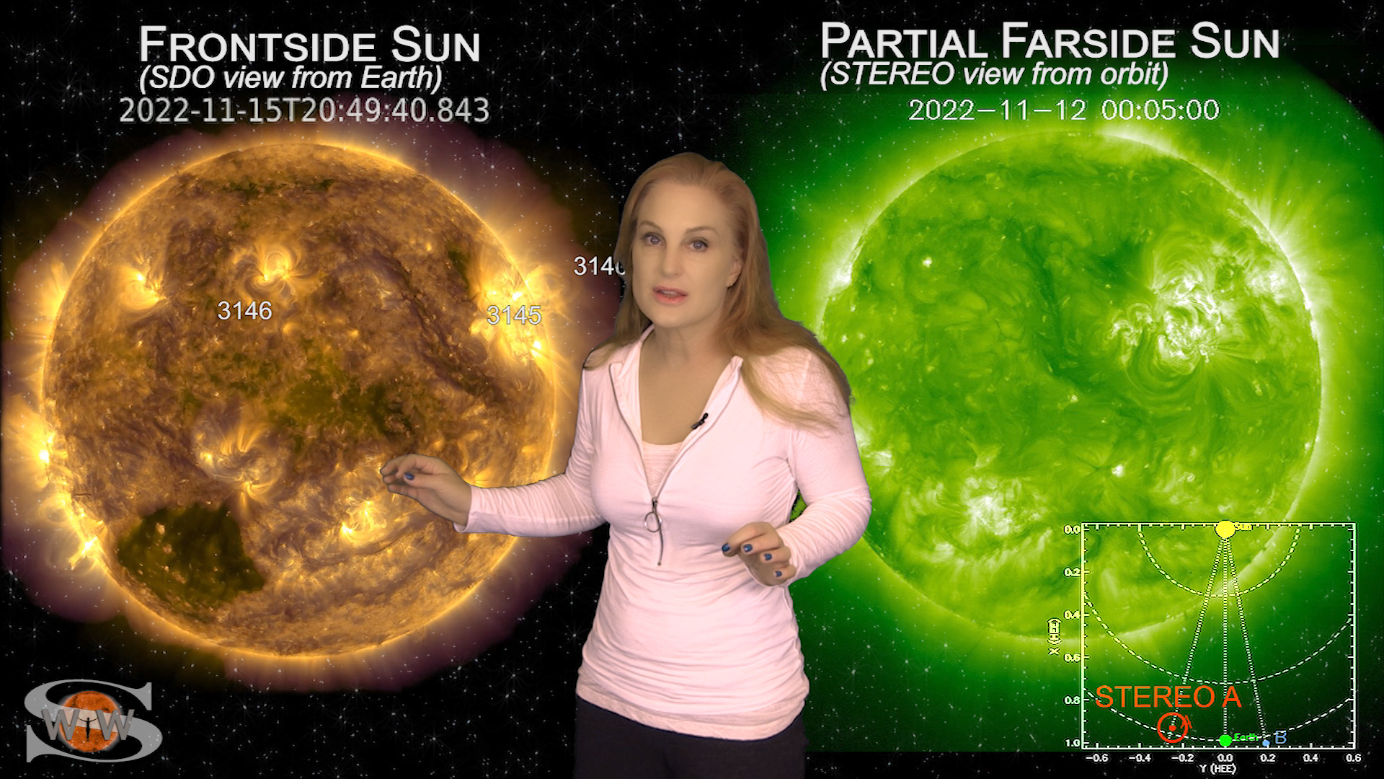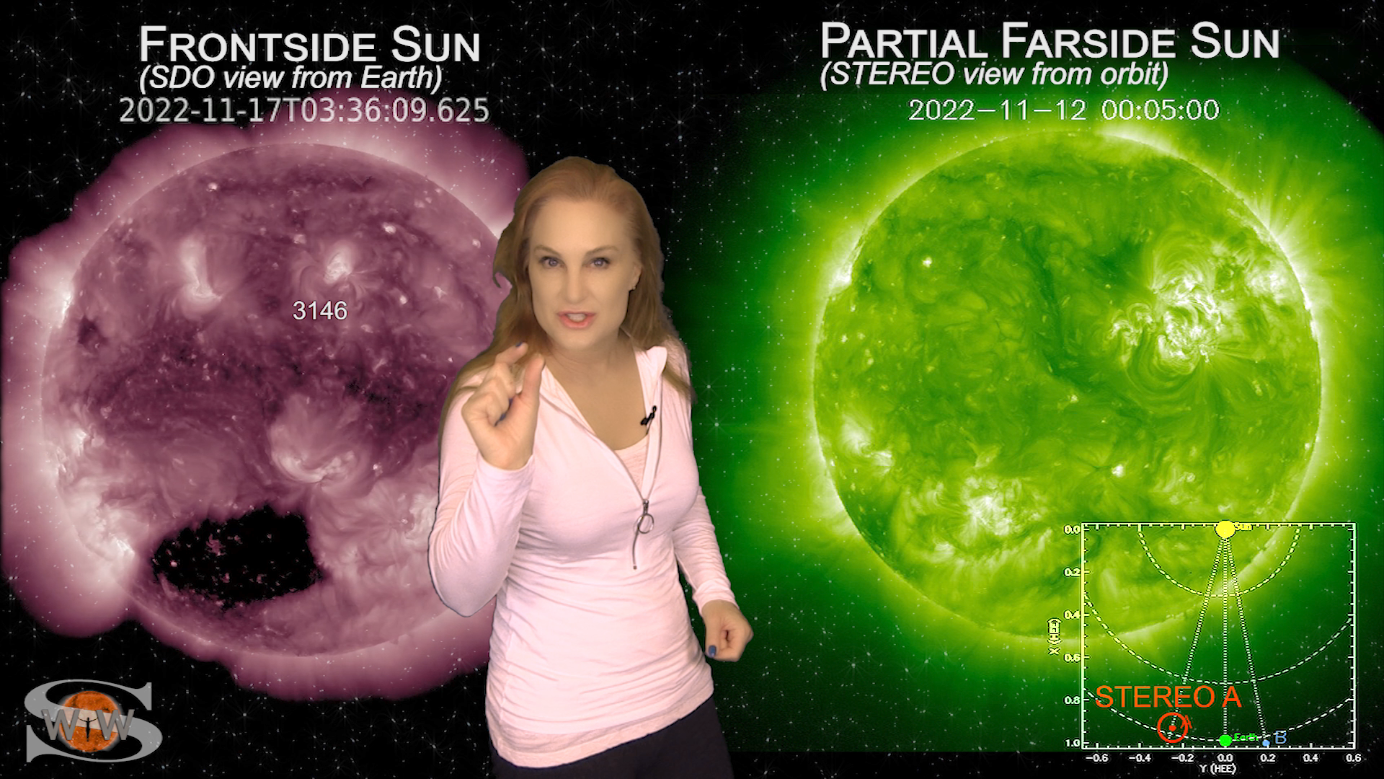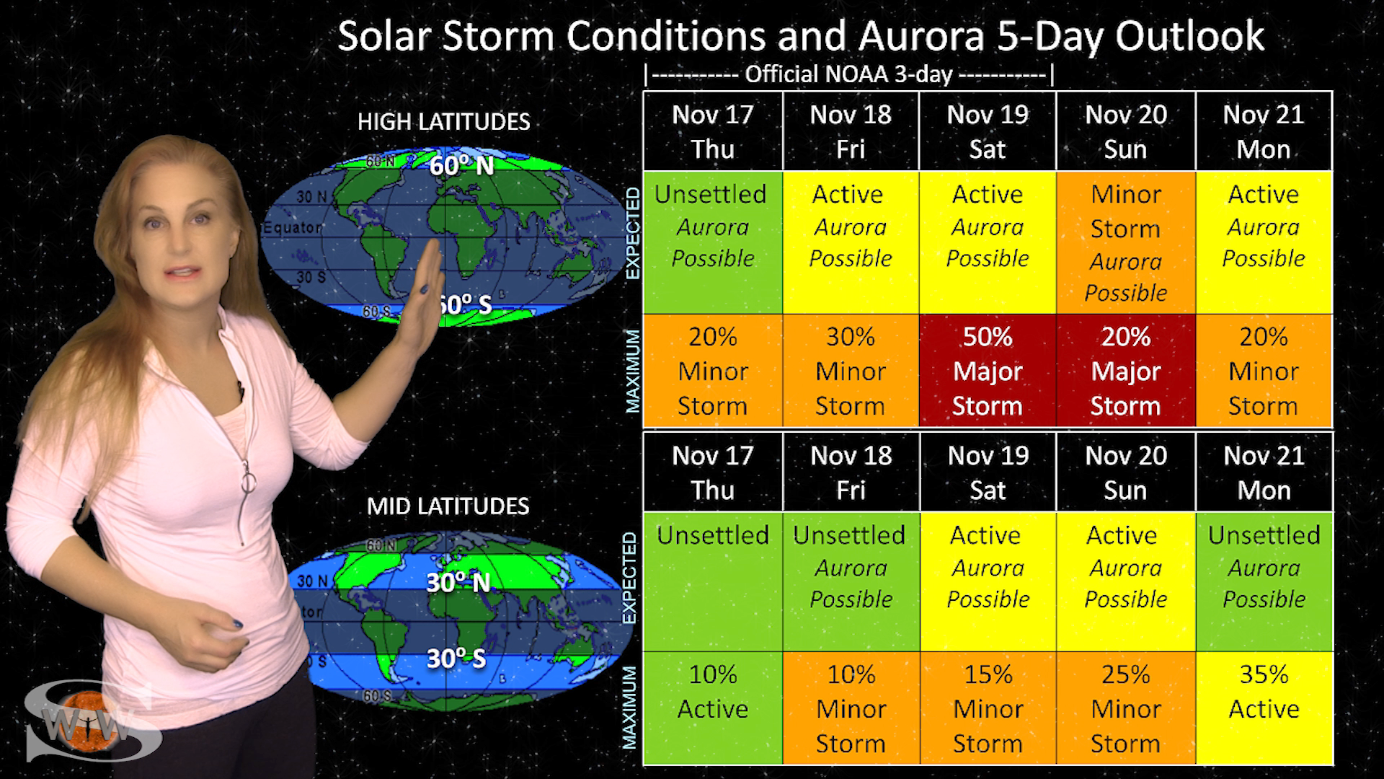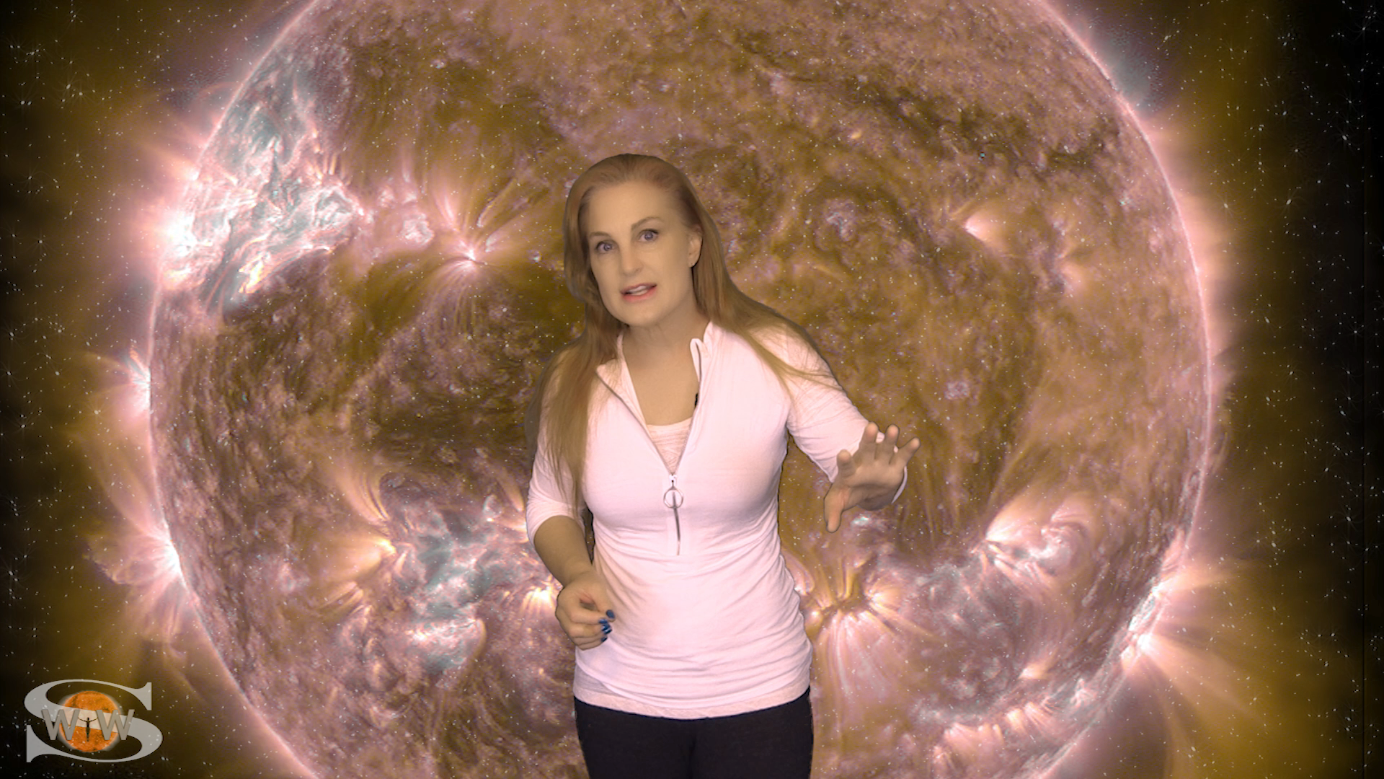Our Sun switches gears this week as the set of active regions that gave us some big flares and radio blackouts last week rotates to the Sun’s farside and a dark coronal hole begins to rotate into the Earth-strike zone. This means radio communications on Earth’s dayside will improve, and aurora possibilities on Earth’s nightside increase. Fast solar wind is expected to hit Earth starting around the 19th and could bring aurora down into mid-latitudes for a short while. Aurora photographers at high latitudes have a better chance as a glancing passage for a solar storm could enhance conditions starting even earlier, possibly by late on the 17th. GPS users should stay vigilant around dawn and dusk and anywhere near aurora over the next few days as it could impact signal reception. Lean the details of the coming fast solar wind and the glancing solar storm blow (the specific NASA solar storm model run I reference can be found here: https://iswa.gsfc.nasa.gov/downloads/20221114_102400_2.0_anim.tim-den.gif ), find out where aurora may be visible, and see why amateur radio operators smile while GPS users stay cautiously optimistic this week. Want early access to these forecasts, tutorials on Space Weather, & more? Visit: https://patreon.com/SpaceweatherWoman
Podcast: Play in new window | Download (Duration: 7:38 — 10.5MB)
Subscribe: Apple Podcasts | Spotify | RSS
